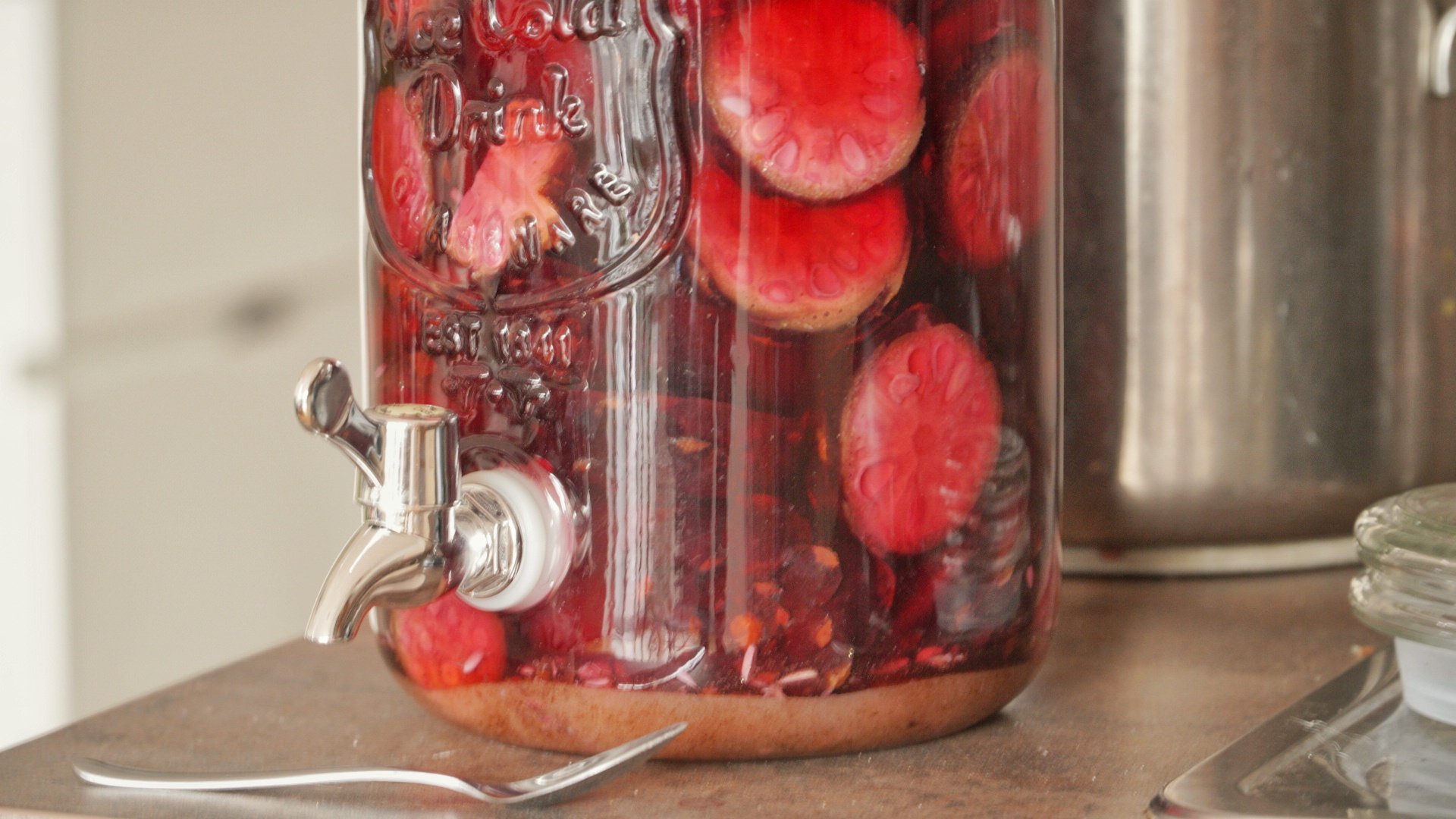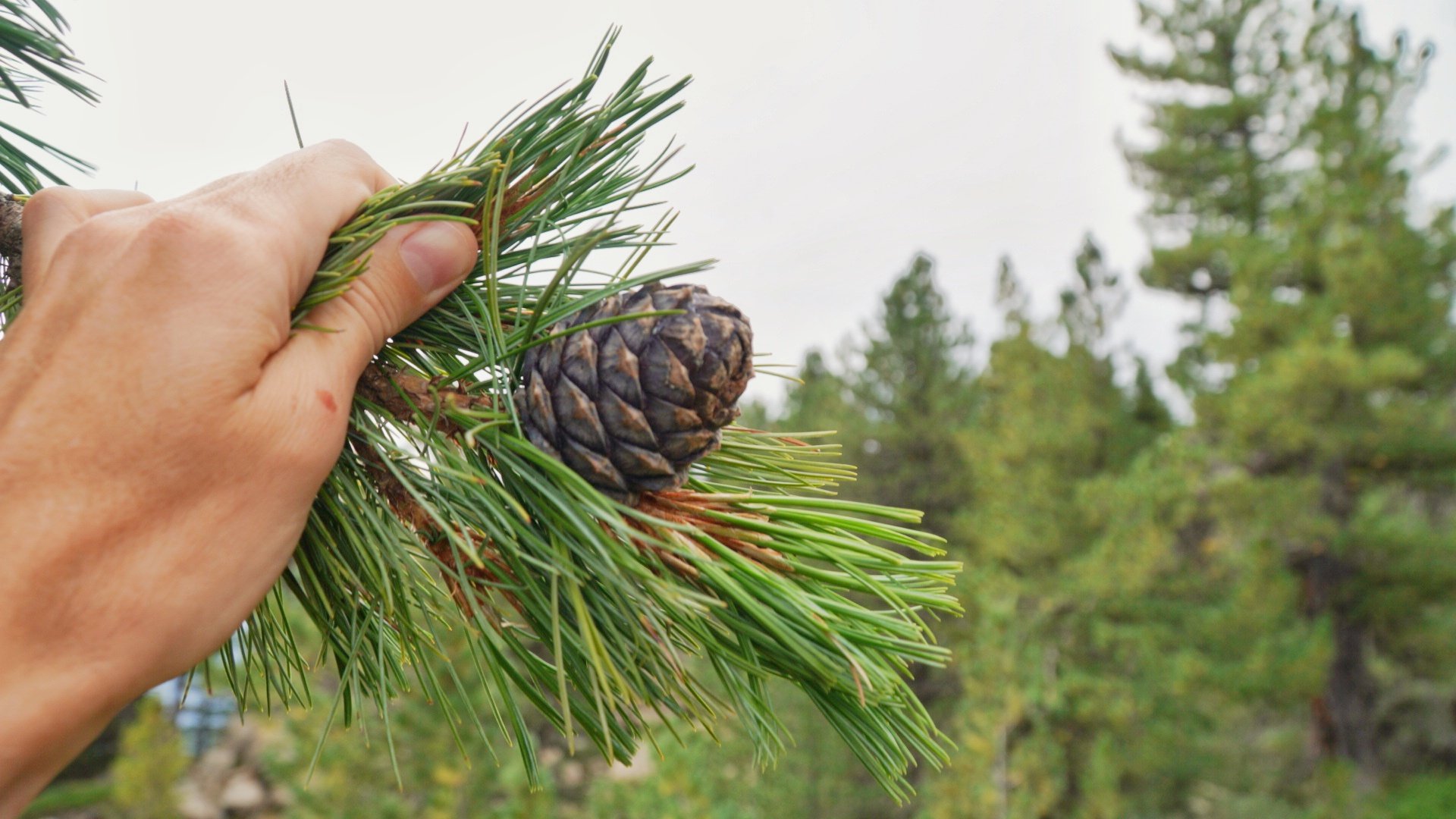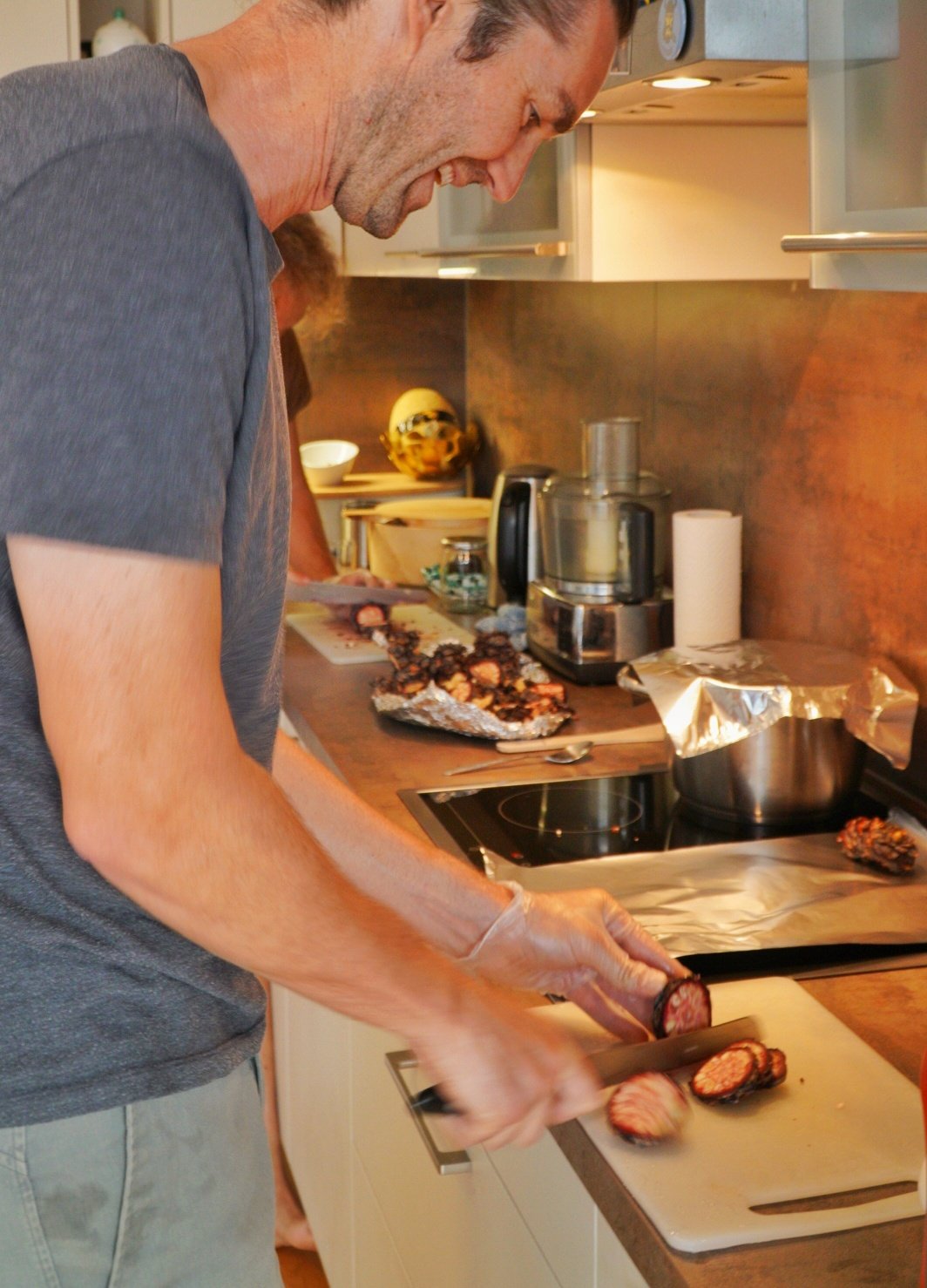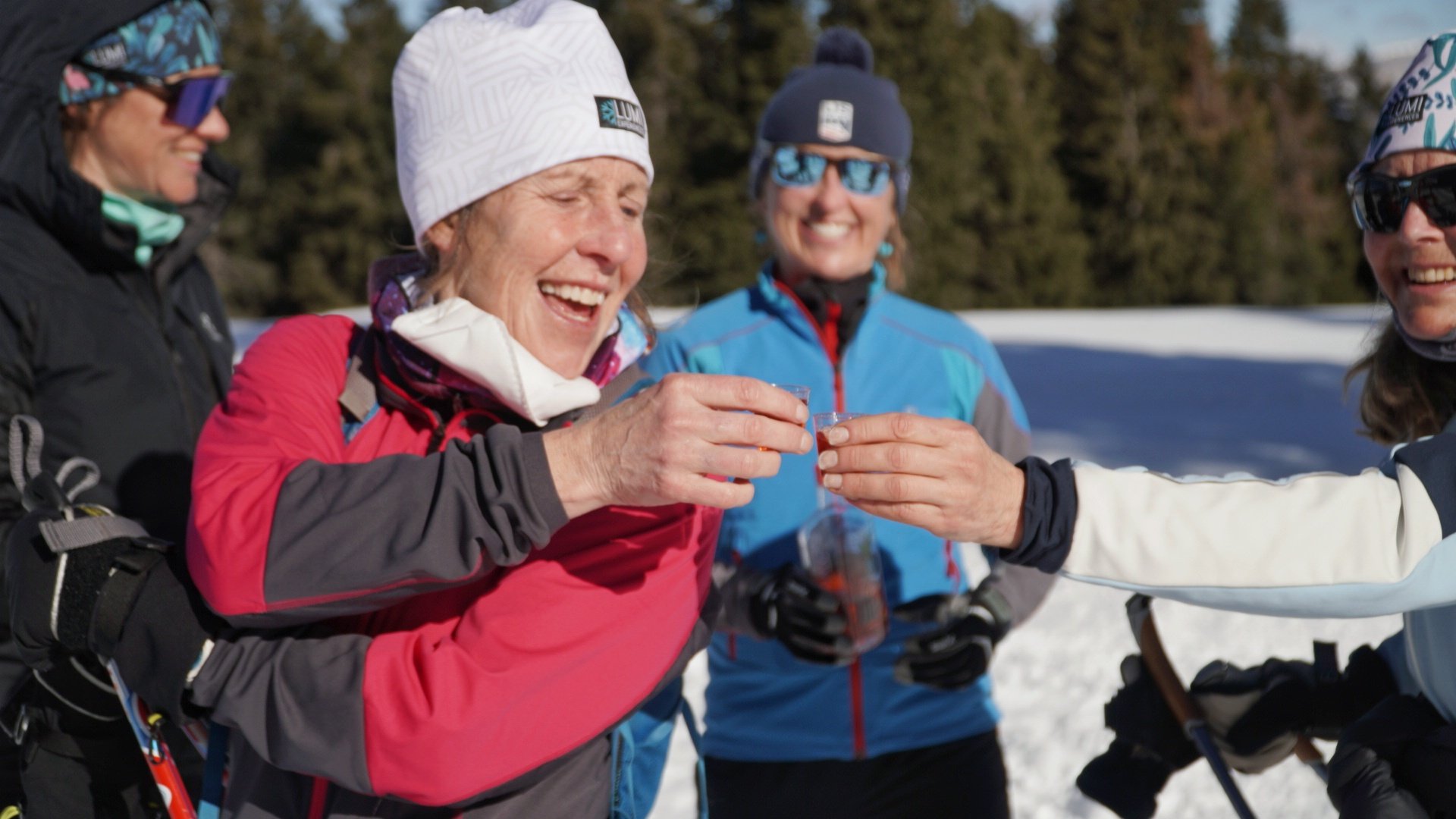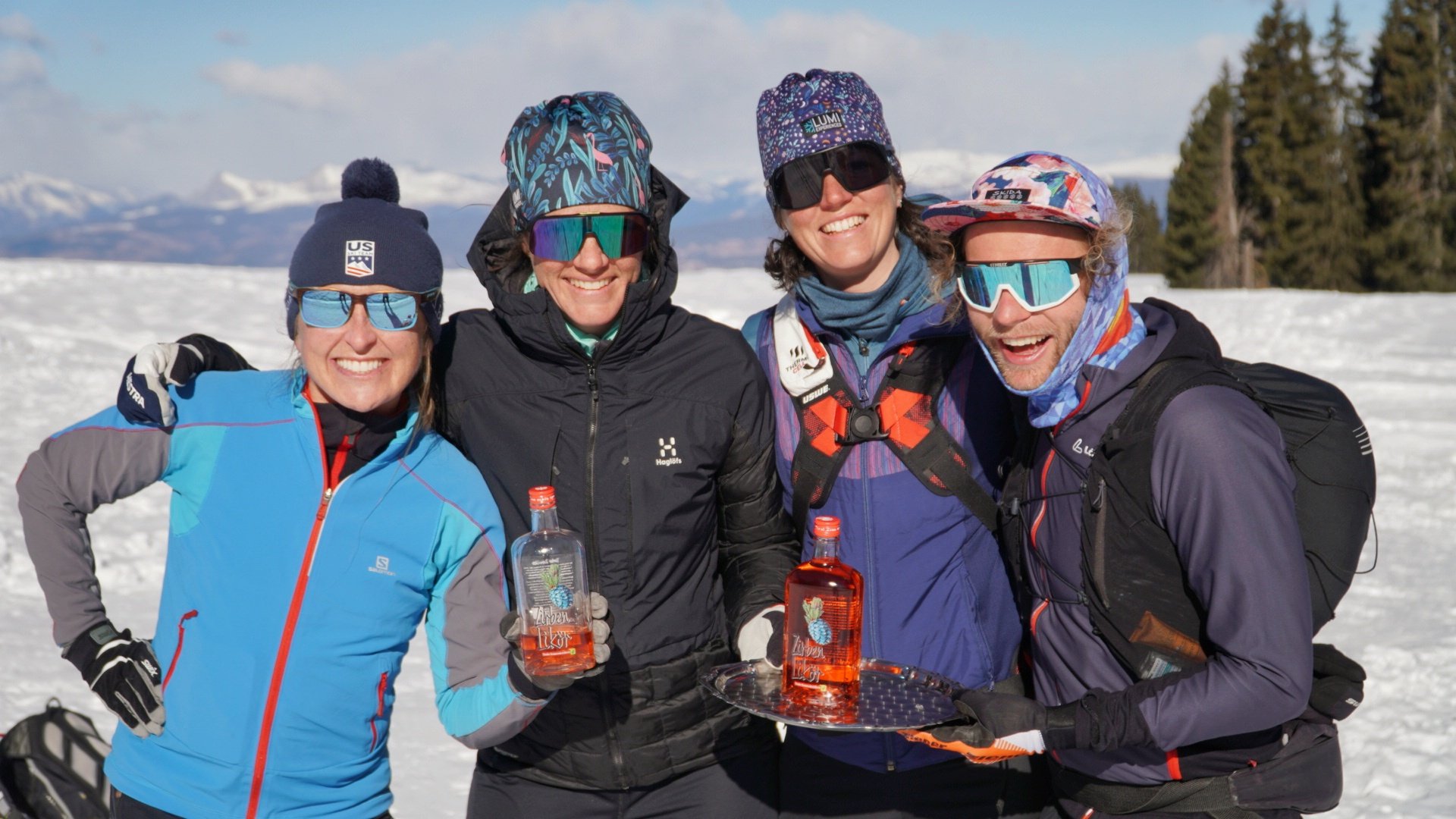Zirbenschnaps
Early production of the Zirbenschnapps
They say “skiers are made in the summer.” It turns out, Zirbenschnaps is also made in the summer. This special Tyrolean beverage is a Lumi guest favorite on the ski trails in the winter.
Zirbenschnaps or pine schnaps, is made from the cones of the Stone Pine tree. For one week in late July or early August, the pinecones drip with sticky sap. Now is the perfect time of year to harvest them and make schnapps for the coming winter.
The Austrian Stone Pine, or Zirbe, is a very special tree species. They grow exclusively in high alpine terrain, from about 5,000 to 9,000 feet of elevation. It takes about 50 years for this evergreen tree to produce its first pinecones. Once they are old enough, pinecones only bloom every 8 years or so. Zirbe can grow to almost 100 feet tall and live up to 1,000 years. Because of this, they are a highly protected species. High above Innsbruck, the Zirbenweg is a popular hiking path through one of the largest and oldest Stone Pine forests in Europe.
Austrian Stone Pine on the Zirbenweg trail overlooking Innsbruck
This week, Lumi trip leader Raphi led me into the mountains to collect Zirben cones to make a batch of highly coveted Zirbenschnapps.
These special trees are a protected species. Similar to daily bag limits for fish or game in the US, it is allowed to collect 3 - 5 Zirbe cones per person, per day. Sounds easy, right? Not quite.
In order to even get to the pines, you have to hike up into the mountains. The Zirbenweg Trail is located about 4,000 feet above Innsbruck. Once you have hiked high into the mountains, you then have to find trees that have produced cones. Once you find the cones, perhaps the hardest part is actually collecting them, as they are usually close to the top of trees that reach heights of over 100 feet tall.
Zirbe Pinecone
Raphi showed up to our adventure with plastic gloves and a plastic garbage bag. “What’s that for?” I asked. I had assumed the cones would be light and dry, like the pine cones that fall from the trees in autumn. Lesson number one: sap-filled pine cones are heavy and sticky.
There’s a reason why pine tar was used as wax on skis for centuries before synthetic kick waxes were invented. Once your backpack, shirt or hands touch one of the sap-filled cones, it’s harder than klister to clean off.
Fortunately, Raphi is a seasoned Zirbenschnapps producer. He knew exactly when and where to go to collect the cones. After just a few minutes, we had collected our daily bag limit, but not before my hands were covered in sap. We headed off to dinner at his favorite hut on the mountain and savored another Austrian delicacy that’s collected in the forests this time of year: Chanterelle soup. But that’s a story for another time.
Lumi founder Garrott getting put to work slicing sticky cones
The sap in the cones starts to dry quickly, so it is imperative to start your Schnapps production soon. We spent the next day slicing the cones with a serrated bread knife and putting the slices, oozing with red sap, into flavorless schnapps. It turns out the pine cones don’t actually ferment. The sap is used to add flavor to the beverage while they soak for over a month.
How does Zirbenschnapps taste? Imagine closing your eyes as you walk through your favorite pine forest. Now bottle that smell that surrounds you and take a sip. That’s Zirbenschnapps – a favorite winter beverage to warm you from the inside while you’re out on the ski trail.
Lumi guests sampling Zirbenschnaps
Not wanting to let any of the pine nuggets go to waste, we also harvested the nuts from the inside of the cone. They look like pine nuts, but rather than having a roasted, salty taste like you find from a store, the small nuts from Zirbe cones are sweet and also taste like the smell of pine trees.
Finally, we used a few extra slices to make Zirbensyrup. It’s basically the same as making Elderflower Syrup, but uses pinecones instead of Elder flowers. Zirbensyrup tastes like the non-alcoholic version of Zirbenschnapps when mixed with soda water and garnished with lemon slices and mint leaves. Since we won’t be drinking the Zirbenschnapps until winter, Zirbensyrup makes a refreshing drink for the hot months of summer.
Lumi Trip Leaders Holly Brooks, Anna, Kathi and Raphi await guests with Zirbenschnaps on the Marcialonga trip
Want to sample Zirbenschnapps for yourself this winter? It’s a featured drink on several of Lumi’s trips that visit Austria, including to Seefeld & Seiser Alm or our Dolomitenlauf & Marcialonga trip.
As the world’s premier cross country ski travel company, Lumi Experiences offers boutique trips that introduce travelers to winter cultures where nordic skiing is a part of everyday life — from Austria to Norway. It’s a ski vacation like no other, where cultural experiences like cheese making and Zirbenschnapps perfectly balance exploring the world’s most scenic cross country ski destinations.
After a week with Lumi Experiences you will be physically healthier, mentally calmer and totally invigorated. Our guests rave about their expert trip leaders, wholesome meals, comfortable accommodations and local libations poured and savored often. That’s what it’s all about!
See all Lumi cross-country ski trip destinations at: www.lumiexperiences.com
Reach out to learn more, see a trip itinerary and even reserve your spot: info@lumiexperiences.com
See you on the trail… And in the meantime, Prost!
Garrott

